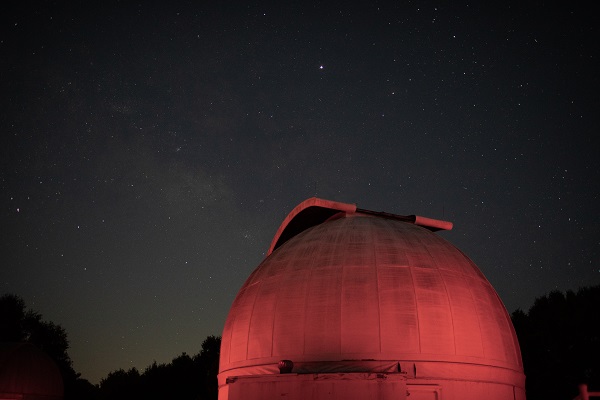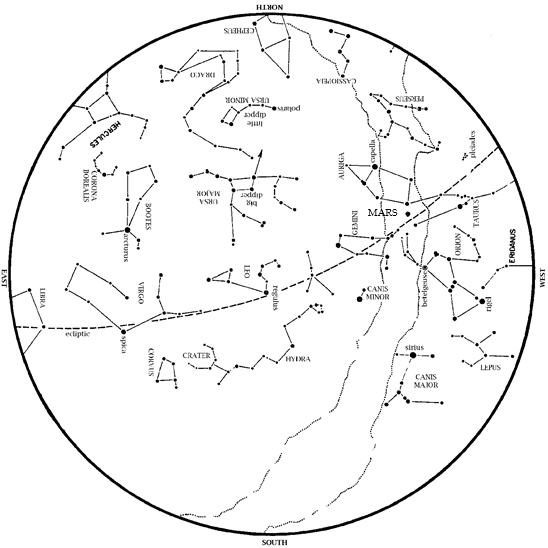Mars continues to fade a little bit each night now that Earth has overtaken it and is pulling away. However, it fades out gradually; Mars remains almost as bright as the stars around it in April 2021. And Mars is high in the west–well placed for observing right as night falls.
Jupiter and Saturn are the morning sky this month, low in the southeast.
Venus remains lost in the Sun’s glare this month and hard to see. Superior conjunction (Venus directly on the far side of the Sun from Earth) was on March 26.

April is the last month to see the full set of brilliant winter stars which now fill the western evening sky. Dazzling Orion is in the southwest at dusk. His three-starred belt is halfway between reddish Betelgeuse and bluish Rigel. Orion’s belt points rightward to Aldebaran in Taurus the Bull. To Orion’s upper left are the twin stars Castor and Pollux, marking the heads of Gemini, the Twins. You can find Sirius, the brightest star we ever see at night, by drawing a line from Orion’s belt towards the left. Forming a triangle with Sirius and Betelgeuse is Procyon, the Little Dog Star.
Joining the winter stars are stars of spring rising in the east. Ursa Major, the Great Bear, which includes the Big Dipper, is high above the North Star on spring evenings. Extend the Big Dipper’s handle to ‘Arc to Arcturus’ and then ‘speed on to Spica’. Look for Leo, the Lion high in the sky at dusk. There are fewer bright stars in this direction because of where the plane of our galaxy is in the sky. The area of sky between Gemini and Taurus and over Orion’s head is the alactic anticenter, which means that we face directly away from the galactic center when we look in this direction. Those bright winter stars setting in the west are the stars in our galactic arm, right behind the Sun. On the other hand, if you look at the sky between Ursa Major, Leo, Virgo, and Bootes, you’re looking straight up out of the galactic plane, towards the galactic pole. There are fewer bright stars in this direction.

In the west, Dazzling Orion, the Hunter sets with Taurus, the Bull. To Orion’s left are the two Dog Stars—little dog Procyon and big dog Sirius. Sirius outshines all other stars we see at night. The Big Dipper is high in the north. Leo, the Lion, is high in the south. These stars, along with Arcturus, announce the spring.
Moon Phases in April 2021:
Last Quarter April 4, 5:02 p.m.
New April 11, 9:31 p.m.
1st Quarter April 20, 1:59 a.m.
Full April 26, 10:31 p.m.
This month, NASA hopes to achieve the next milestone of the groundbreaking Perseverance mission. As early as April 8, NASA plans to launch the Ingenuity Mars Helicopter for the first time, executing the first ever powered, controlled flight on another world.
Our George Observatory is now open every Saturday night for observing!
Clear Skies!






